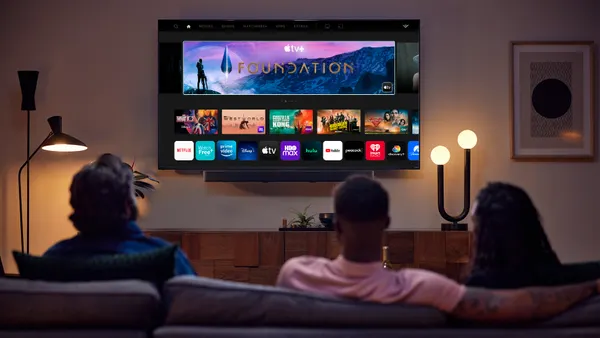You’re hunched over your laptop, drowning in a sea of CRM data. Your eyes dart from one loss reason to another, and you start to spot a pattern:
“Lost due to pricing.”
“Competitors undercut us.”
“They couldn’t meet our price point.”
You’ve seen this movie before, and you know how it ends – with a mountain of deals “supposedly” lost to the almighty dollar. Then your phone buzzes. It’s a Slack message from a rep: “Just lost the MegaCorp deal. They went with Apple. We couldn’t compete on price.”
But here’s the thing: if you relied on all of this and then brought ‘price’ to leadership as your biggest reason for losing deals… you’d be flat-out wrong. At Klue Labs, we’ve dissected over 3,400+ buyer interviews, and used our AI to uncover the real reasons deals are won or lost so that you can fix your go-to-market blindspots. And guess what? ‘Price’ alone isn’t the deal-breaker you might think. Here’s what it really means.
Price is not as common of a deal-breaker as you might think
Our data shows that of the most common loss reasons buyers shared, price actually ranked third behind product and sales experience issues.

Simply put, buyers are much more likely to make their decisions based on your seller’s execution and your product offering. This means a rep struggling to differentiate during the sales cycle or a glaring product gap is a far greater concern for your company’s ability to compete and close deals. Not whether or not you need to race your competitor to the cheapest price tag.
Enterprise deals are the most price-resilient
When we broke down this data even further, we discovered that price became even less of a concern in enterprise (5,000+ employees) and SMB (<200 employees) deals.

Enterprise deals swaying less due to dollars and cents makes sense given the much larger ACV and budgets available. In fact, seller experience as a loss reason also dropped, while product issues skyrocketed. However, it did surprise us that SMB deals weren’t slipping through the cracks because of price alone, especially in the recent economic climate of the past 18 months…
Most deals aren’t being lost due to budget constraints
… which leads us to the topic de jour: budget constraints. A common reason seen in CRM drop-down codes or seller debriefs. However, when looking even deeper within just the loss reasons due to price, “budget constraints” was mentioned less than 10% of the time.

It’s worth noting that win-loss interviews conducted are typically deals that made it to a late stage of the sales process. So, it’s not unsurprising that ‘budget constraints’ become less of a sticking point in the deals analyzed. However, the fact that less than one in 10 deals lost due to price are actually due to budget constraints shows that it isn’t necessarily the deal-breaker that prevents your revenue teams from closing.
What does losing on “price” really mean?
Okay, so budget constraints are less of a concern than anticipated. And “price” alone as a loss reason is vague, fluffy and really doesn’t inform your strategy to compete more effectively.
Then what do buyers actually mean when they say you lost on price? And more importantly, what can you do about it? Here’s what they had to say:

Three ways to compete more effectively when it comes to price
Based on what we discovered in the data, here are three ways that you can ensure your go-to-market strategy can confidently navigate the next time price becomes a hurdle that could cause a winnable deal to slip.
Dig into the root cause of the objection
Your reps shouldn’t immediately jump to the conclusion that their buyers’ problem is solely related to sticker shock. Instead, it requires digging. Get into the root cause when met with a pricing objection by:
- Acknowledging the objection.
- Asking a targeted question.
Example script:
“I appreciate you bringing up your concerns about pricing. In my experience, when clients raise this issue, it’s usually about things other than just ‘price’.
Price aside, what other concerns do you have about our offering?”
Now, if you’re in a dogfight deal and you know the competitor is throwing discounts, another way to handle an immediate pricing objection is by asking:
“If price was on par with competitors, who would you select and why?”
Both of these tactics allow you to get beyond the initial pricing hurdle.
Anchor your value on a quantifiable business case
Value and ROI concerns (22%) become a pricing loss reason when your go-to-market team struggles to build a rock-solid business case. Although the pain you solve for your direct user might be great… the person signing off on the purchase cares about the impact on the business. Here’s a framework to focus on:
- Clearly define the specific business challenge or pain point
Quantify the current impact of the problem. Whether that is lost revenue, inefficiencies or costs. You want to anchor the business case on this. All roads should lead back to the business problem you’re focused on solving.
- Identify your biggest stakeholders
Determine who benefits from your solution both directly and indirectly. Understand their specific pain points and goals.
- Establish baseline metrics
Gather current performance data from your buyer. If unavailable, use industry or customer benchmarks.
- Quantify the potential impact you can uniquely solve
Calculate either direct cost savings like won revenue or indirect costs like efficiency gains that your product will provide. If this is anchored on a big enough business problem and your product is uniquely equipped to solve it compared to competitors, your chances of being stumped by ‘price’ will plummet.
Remove any ambiguity around the pricing structure
When it comes to pricing, clarity is key. Confusing structure and model issues contribute to over 40% of deals lost to price
Here’s a framework to approach pricing conversations that can significantly improve the buyer’s understanding and comfort level.
- Set context.
Coach your sales reps to start by providing a ballpark price range based on the buyer’s company size, use case and industry. Without naming names, refer to what other customers like them are paying in order to do so.
This provides a clear starting point and puts your sales reps’ in the position of the educated seller.
“Companies of your size and use case typically spend between $X and $Y.”
- Validate requirements.
Ask targeted questions about your buyer’s needs across different user types, features and integrations. The questions you ask will vary based on your company’s pricing model, however it shows your buyer that you’re attentive to their specific situation.
- Provide tiered options based on volume and be clear to point out the volume-based discounts.
At times, buyers need to have passed AP Calculus in order to figure out software pricing.
Simplify with options that fit with your most common deals and use cases. This allows you to remove friction in the deal and position these options as pre-discounted.
- Anchor in business value
Anytime the conversation begins to feel like you and your buyer aren’t seeing eye-to-eye, circle back to business value (because you’ve already nailed your quantifiable business case above!).
“Based on our previous conversations, you’re losing $X in revenue/efficiency. By [solving business problem] we expect to be able to reduce that by X% which means $Y in additional revenue/cost savings per year.”
Reframe the price conversation
Our deep dive into buyer behavior reveals one crucial fact: price isn’t the deal-breaker it’s often made out to be. Once you scratch beneath the surface, the real root cause behind winning deals goes beyond just dollars and cents. In the coming months, we’ll be sharing more data-driven insights to help you fine-tune your approach to win more over the competition.
If you made it this far then odds are you’re keen to get a leg up on the competition. Check out our on-demand Compete Week sessions, where some of the best go-to-market leaders share win-loss analysis techniques and other strategies to get closer to your buyers’ decision-making process.










